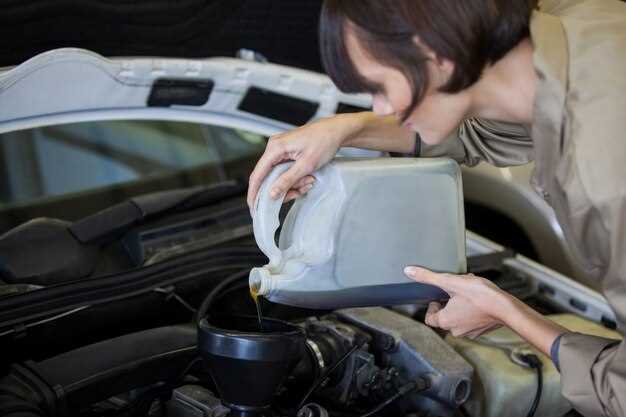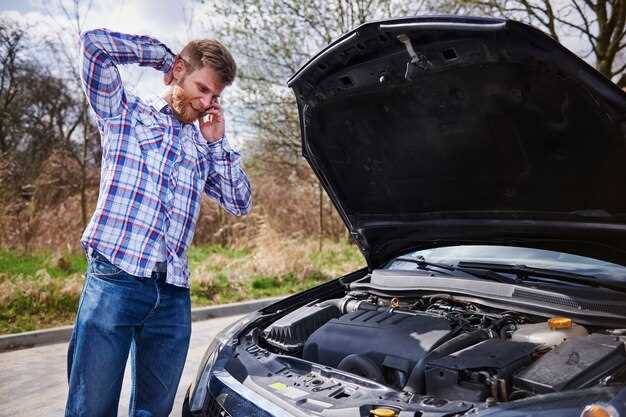
Engine overheating can lead to significant damage and costly repairs, making it essential for vehicle owners to understand how to prevent this problem. Understanding the causes of engine overheating is the first step in protecting your vehicle’s performance and longevity. Factors such as low coolant levels, a faulty thermostat, and a malfunctioning water pump can all contribute to this issue.
Regular maintenance and routine checks are critical in ensuring that your vehicle operates smoothly and efficiently. By establishing a preventive maintenance schedule, you can catch potential problems before they escalate into serious concerns. This includes checking coolant levels, inspecting hoses, and testing the radiator for any signs of wear or leaks.
In addition to maintenance, developing good driving habits can also play a vital role in preventing engine overheating. Avoiding prolonged idling, maintaining appropriate speeds, and being mindful of temperature gauges can help keep your engine cool. By taking these proactive steps, you can extend the life of your engine and enjoy a more reliable driving experience.
Regularly Check Coolant Levels
Maintaining the proper coolant level is essential for the efficient operation of your vehicle’s engine. Coolant, or antifreeze, plays a critical role in regulating engine temperature, absorbing heat, and preventing overheating. Regularly checking the coolant levels can help you identify potential issues before they escalate into serious problems.
To check the coolant level, locate the coolant reservoir, typically marked with a cap labeled “coolant” or “antifreeze.” Make sure to check the level when the engine is cool to avoid injury from hot steam or liquids. The reservoir usually has minimum and maximum level markers; ensure the coolant is within these limits. If the level is low, it indicates a leak or evaporation issue that needs attention.
It’s advisable to inspect coolant levels monthly or before long trips. Keeping up with this routine can help prevent overheating and extend the life of your engine. If you find that you are consistently adding coolant, it may signify a more serious problem, such as a leak in the radiator or hoses, and you should consult a mechanic for further diagnosis.
Additionally, consider checking the condition of the coolant itself. Over time, coolant can become contaminated with rust or debris, diminishing its effectiveness. If the coolant appears discolored or has a foul smell, it may need to be flushed and replaced according to your vehicle manufacturer’s recommendations.
Inspect the Radiator for Blockages
The radiator plays a critical role in your vehicle’s cooling system, and any obstructions can lead to overheating. Regular inspection is essential to maintain optimal performance. Begin by visually examining the radiator’s exterior for debris such as leaves, dirt, or insects that may inhibit airflow.
Next, check for any signs of physical damage, such as bent fins or corrosion. These issues can disrupt the flow of coolant and air, leading to inefficient heat dissipation. If the radiator appears clean externally, proceed to inspect the internal components.
Flushing the Radiator is a recommended practice to remove any internal blockages caused by rust or scale buildup. This process involves draining the coolant and using a specialized radiator flush solution to clear out contaminants. Ensure to follow up with refilling the system with fresh coolant to maintain efficiency.
Accessing the Radiator may involve removing other components, so consult your vehicle’s manual for specific instructions. Ensure that the engine is cool before attempting any inspection to avoid burns and injuries. If you suspect a blockage but cannot identify it, seeking the help of a professional mechanic is advisable.
Maintaining a clear and functional radiator will significantly reduce the risk of engine overheating and extend the lifespan of your vehicle’s engine.
Monitor Temperature Gauge While Driving
Keeping a close eye on your vehicle’s temperature gauge is crucial for preventing engine overheating. This instrument provides real-time feedback about the engine’s operating temperature, allowing you to detect any abnormal fluctuations. A needle that consistently nears the “hot” mark indicates potential overheating, which may require immediate attention.
Always glance at the gauge periodically while driving, particularly during prolonged trips or in heavy traffic, where the engine may be under more strain. If you notice the temperature rising, it’s wise to reduce your speed and turn on the heater to help dissipate heat from the engine. In some cases, pulling over to a safe location to let the engine cool down might be necessary.
Staying vigilant about the temperature gauge not only helps avoid costly repairs but also ensures a safer driving experience. Regularly checking the gauge fosters a proactive approach to vehicle maintenance, allowing you to address possible issues before they escalate into serious problems.
Consider familiarizing yourself with the normal operating range of the temperature gauge specific to your vehicle model. This knowledge will enable you to make informed decisions quickly should you encounter any irregularities.
Replace Worn or Damaged Hoses

Hoses play a crucial role in your vehicle’s cooling system, transporting coolant to various engine components. Over time, these hoses can wear out or become damaged, leading to leaks, reduced coolant flow, and ultimately engine overheating. Here are key points to consider regarding the replacement of worn or damaged hoses:
- Regular Inspection: Periodically check all hoses for signs of wear, such as cracks, bulges, or stiffness. Rubber hoses can deteriorate due to heat exposure and age.
- Look for Leaks: Examine the ground under your vehicle for coolant spots. A leak often indicates a compromised hose that needs immediate attention.
- Check Connections: Ensure hose connections are secure and not loose. A loose connection can lead to coolant loss and overheating.
- Use Quality Replacement Hoses: When replacing hoses, opt for high-quality materials that are designed to withstand high temperatures and pressure.
- Follow Manufacturer Guidelines: Refer to your vehicle’s manual for specific recommendations on hose types and replacement intervals.
- Consider Age and Mileage: Even if hoses appear fine, consider replacing them if your vehicle has high mileage or is over 5 years old as a preventive measure.
Replacing worn or damaged hoses not only protects your vehicle from overheating but also contributes to its overall reliability and performance. Make hose replacement a part of your regular vehicle maintenance to ensure a well-functioning cooling system.
Use High-Quality Engine Oil
Using high-quality engine oil is essential for maintaining optimal engine performance and preventing overheating. Engine oil serves multiple key functions, including lubrication, cooling, and cleaning of engine components. The right oil can significantly improve your vehicle’s efficiency and longevity.
High-quality engine oils are formulated with superior base oils and advanced additives that enhance performance under various driving conditions. These oils can withstand higher temperatures and provide better protection, reducing friction and wear on moving parts.
When selecting engine oil, consider the viscosity ratings that are suitable for your vehicle’s engine and the operating environment. Always refer to the owner’s manual for specifications regarding oil types and recommend changes.
| Feature | Benefits of High-Quality Oil |
|---|---|
| Improved Lubrication | Reduces friction and wear, extending engine life. |
| Better Heat Resistance | Reduces the risk of overheating in extreme conditions. |
| Enhanced Engine Cleaning | Prevents sludge and deposits, promoting clear oil flow. |
| Longer Change Intervals | Allows for extended periods between oil changes, saving time and money. |
In summary, using high-quality engine oil is a simple yet effective way to prevent engine overheating and enhance the overall performance of your vehicle. Regular oil changes and adherence to manufacturer’s guidelines further contribute to engine health.
Schedule Routine Maintenance Services
Scheduling routine maintenance services is crucial for preventing engine overheating in your vehicle. Regular inspections by a qualified mechanic can help identify potential issues before they escalate. These services typically include checking the coolant level, inspecting hoses and belts, and evaluating the overall health of the cooling system.
During routine maintenance, mechanics will also check the thermostat and radiator for proper function. A faulty thermostat can cause irregular coolant flow, leading to temperature spikes. Additionally, ensuring that the radiator is free of debris and in good condition is essential for efficient heat dissipation.
Changing the engine oil at recommended intervals is another vital aspect of maintenance. Clean oil provides better lubrication, reduces friction, and helps regulate engine temperature. It’s also important to replace the oil filter to ensure that contaminants do not accumulate and interfere with the engine’s cooling performance.
Regular maintenance services should also include the inspection of the cooling fans and sensors. A malfunctioning fan can prevent adequate airflow, particularly in stop-and-go traffic or during hot weather. Ensuring that these components function correctly will help maintain optimal engine temperature under various driving conditions.
Utilizing the manufacturer’s recommended maintenance schedule will help keep your vehicle in top shape. Proactive approaches to maintenance reduce the risk of overheating and can extend the longevity of your engine. Be sure to keep records of all services performed to track your vehicle’s health effectively.















